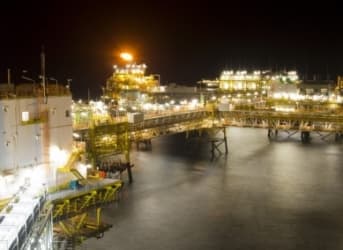Despite what appears to be a saturated oil market in 2014, oil producers around the world will struggle to meet rising demand over the next few decades.
In its latest annual World Energy Outlook, the International Energy Agency (IEA) warned that the current period of oil abundance may be fleeting, and in fact, without heroic levels of production increases, oil markets will grow dangerously tight in the coming years.
Global oil demand is expected to increase by 37 percent by 2040, with a dominant proportion of that coming from developing countries – i.e. China and India. In fact, the IEA says that for every barrel of oil the industrialized world expects to eliminate from demand through efficiency or other ways of reducing demand, developing countries will burn through two additional barrels.
Related: Will US Shale Oil Undermine Its Own Success?
The IEA predicts that the world will need to extract an additional 14 million barrels of oil per day (bpd) by 2040, which comes on top of today’s production levels of about 90 million bpd. While there is a lot of triumphalism in the United States about shale oil production and how places like the Bakken and the Eagle Ford have ushered in an era of abundance, the IEA says that tight oil production in the U.S. – along with Canadian oil sands – will only last until the mid-2020’s.
After that point, when the shale revolution peters out, oil markets revert to their old ways – that is, looking to the Middle East once again to meet global demand. And that should raise some alarm. Saudi Arabia will remain one of the largest and most important oil producers in the world, but it probably won’t be able to ramp up production much beyond its current levels. There is some slack production in Iran, due to western sanctions, but even when it returns to the fold it likely will only make a small contribution to oil production growth in the long-term.
Instead, much of the world’s hopes are pinned disproportionately on Iraq. A year ago, after the IEA released its 2013 WEO, I wrote about how the IEA was placing a surprising amount of faith in the ability of Iraq to scale up its oil production. For several years, the IEA predicted that Iraq would be able to triple its output from 3 million bpd to around 8.3 million bpd by 2035. Under that assumption, oil prices would rise only a modest amount over that timeframe.
Related: The EIA’s International Energy Statistics
That would have been a monumental task even before the country began unraveling in June 2014. Since then, Iraq has been plunged back into a state of war. The prospect that it can be put back together, and the requisite levels of capital investment can be put into its oil sector in order to add 5-6 million bpd over the next 20-30 years, appears fanciful to say the least.
An estimated $900 billion will need to be deployed each year beginning in the 2030s to bring enough oil online to meet global demand. But the IEA also cautions that replicating the tight oil boom in the United States will be very difficult. Different geological conditions could pose some problems, but the long lead times and opposition to drilling will also slow development in much of the world.
Unlike last year, this time around the IEA appears to be more concerned. “A well-supplied oil market in the short-term should not disguise the challenges that lie ahead, as the world is set to rely more heavily on a relatively small number of producing countries,” the IEA Chief Economist Fatih Birol, said in a press release. And in its WEO Fact sheet, the IEA declares “the task of bringing production above 100 mb/d rests on a fairly limited number of shoulders.”
By Nick Cunningham of Oilprice.com
More Top Reads From Oilprice.com:
- Oil Price Slide - The Real Problem
- U.S. Petroleum Supply Update – Latest EIA Numbers
- Why The Current “Oil Glut” Could Lead To A Price Spike


















